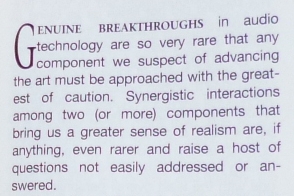i bring this up from time to time, but if you do this experiment you will learn something about stereo. Listen to your system in mono for a few days or so, maybe a week. This teaches you that you are hearing a reproduction system (not a replications of reality system), then, man, switch off that mono button. Boom, listen to stereo, and you will realize how (its for you to find out) it "sounds" when you first hear it, before you become accustomed to it. Now, I am not saying mono is aa preference of mine, but, It sure helped me better understand psychoacoustics.
It is an interesting concept; what is more accurate mono or stereo recording (assuming both well recorded and both using ideal speakers and system) and closer to the reference of playback for music-voice-instruments?
At least mono is easier to integrate into a home IMO, and would assume mono is more accurate depending upon definition, the factors chosen, and critically the music and number of instruments or type.
Cheers
Orb
















